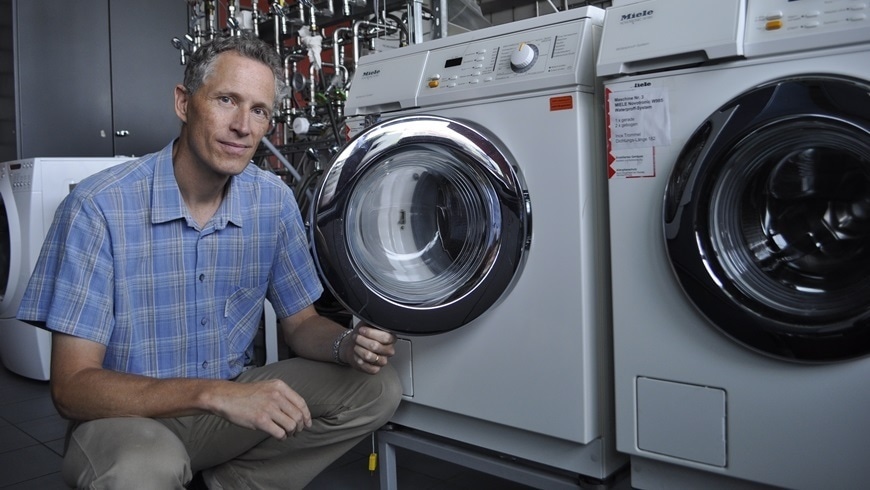Jun 27 2017
The devastating ways in which plastic affects the world's oceans have already been studied even before the UN Ocean Conference in early June. The oceans have billions of plastic pieces floating on them. Their effects are also adequately well-known: marine animals get tangled up in them or swallow them, resulting in them dying in agony.
 Bernd Nowack is shown in his lab. CREDIT Empa
Bernd Nowack is shown in his lab. CREDIT Empa
Individuals are not completely aware of the consequences of the smallest pieces of plastic, called microplastics. Recently, Empa Researchers began an investigation on how microplastics are produced and where they actually originate from.
The presence of microplastics in wastewater can be attributed mainly to two factors. The first refers to the fact that a number of cosmetic products, such as shower gels, creams, toothpaste and peelings, contain small pieces of plastic in order to attain a mechanical cleaning effect. The second factor highlights that microplastics are washed away during the process of washing polymer textile clothing, and thus enter the environment through wastewater.
A number of Researchers who recently studied nanoparticles are currently investigating microplastics. They include Bernd Nowack, Edgar Hernandez and Denise Mitrano (who is presently working at the water research institute Eawag) from Empa's "Technology and Society" department. Recently, the three Researchers, on the basis of their nanoparticle research, published a first quantitative investigation of the discharge of microfibers from polyester textiles during washing, in "Environmental Science and Technology", a specialist journal. The Empa team, in this study, mainly focused their investigation on the ways in which water temperature, washing agents and the length and number of wash cycles affect the discharge of microfibers.
A hypothesis that could not be confirmed
To date, the study is considered to be the most meticulous and systematic investigation of the discharge of microfibers from textiles that has ever been performed. This applies both to the characterization of the released fibers in terms of length and number and also to the quantity of parameters investigated. Nowak and his colleagues discovered that that the quantity of fibers discharged by five different washing programs was always less or more constant, while washing detergents and agents increased the quantity of microfibers released compared with "normal" water. Washing temperature, however, had no effect on the number of microfibers that Nowack's team consequently discovered in wastewater.
Surprisingly, the same was true of the duration of the wash cycles. "And for us, that was really quite astonishing," says Bernd Nowack. He believed that they would prove the well-established hypothesis that the longer a wash cycle lasts, the more microfibers it will release.
At first, it looked as though microfibers were generated during washing.
Bernd Nowack, Technology and Society Department, Empa
However, if this were the case, longer wash cycles should be able to discharge more fibers. But this indeed is not the case. The Empa Researcher makes a frank admission,"Unfortunately, this means that we are not yet able to explain how the released fibers are generated."
A good basis for follow-up investigations
A follow-up study is already planned in order to ensure that this does not remain the case. A PhD thesis on the generation of microfibers during washing will soon be in progress by collaborating with Manfred Heuberger of Empa's "Advanced Fibers" lab. This study will systematically examine a wide range of materials in order to throw light on the generation of microfibers in the washing machine.